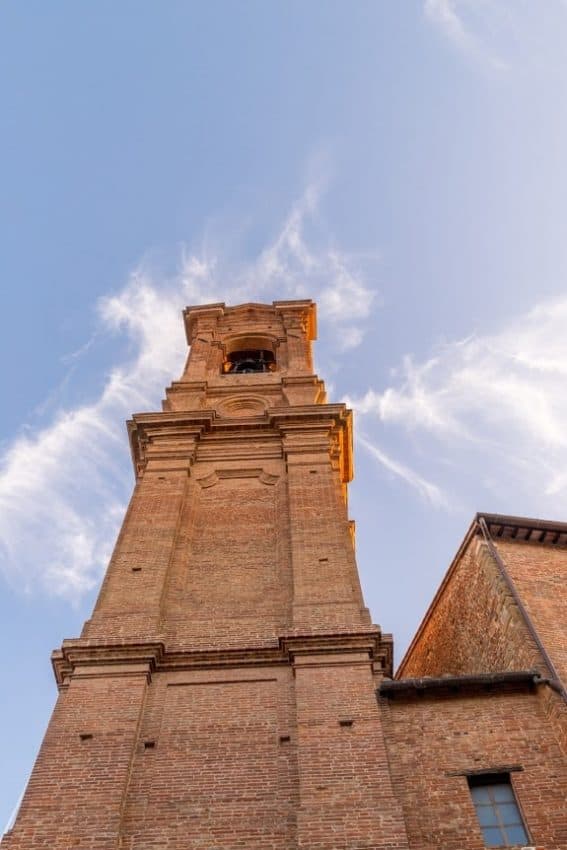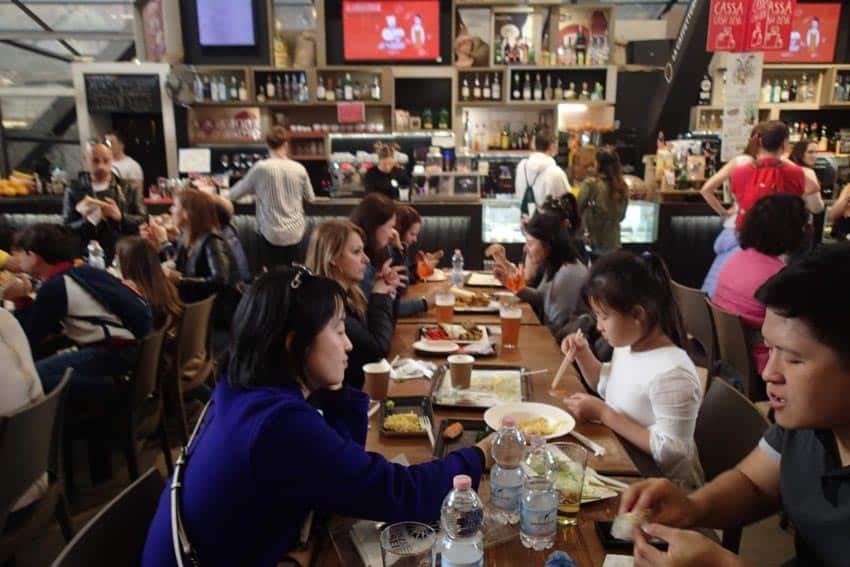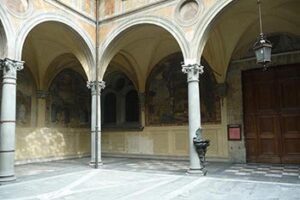
Discovering the Special Charm of Self-guided Florence on Foot
By Oscar Davis
Located in the heart of Tuscany, Florence stands as a living testament to the Renaissance era, boasting a rich tapestry of art,culture, and history. Home to iconic landmarks, masterpieces by renowned artists, and cobblestone streets that whisper tales of the past, Florence invites travelers to embark on a self-guided walking tour, unlocking the secrets of this enchanting city at their own pace.

A self guided walking tour of Florence will provide an immersive experience, allowing you to savor the city’s charm, appreciate its artistic heritage, and stroll through the streets where history unfolded. Florence unfolds like a storybook with each step, revealing its timeless beauty and cultural significance.
Keep Walking
In this article, we will learn about walking tours of Florence, ensuring you capture the city’s essence and create memories that will last a lifetime. Keep reading to embrace the rhythm of Florence, and let the adventure begin.
Piazza del Duomo
Piazza del Duomo is the central square in Florence and serves as the pulsating heart of the city’s historic center. Dominated by the stunning Florence Cathedral, officially known as the Cattedrale di Santa Maria del Fiore or simply the Duomo, the square offers a rich tapestry of architectural wonders and artistic brilliance.
The highlight of the square is the Florence Cathedral, a masterpiece of Gothic architecture. The Duomo’s distinctive red-tiled dome, designed by Filippo Brunelleschi, is an iconic symbol of Florence. Visitors can climb to the top for panoramic views of the city. The cathedral’s facade is adorned with intricate sculptures and reliefs, showcasing the skill and artistry of the Renaissance era.
Giottos’s Campanile
Adjacent to the cathedral is Giotto’s Campanile, a bell tower designed by the renowned artist Giotto di Bondone. The tower is a marvel of Gothic design, featuring elaborate marble panels and sculptures. Climbing to the top offers breathtaking views of Florence and provides a close-up look at the intricate detailing of the tower.
Facing the cathedral is the Baptistery of St. John, one of the oldest buildings in Florence. The octagonal structure is adorned with white and green marble and features bronze doors, including the famous “Gates of Paradise” designed by Lorenzo Ghiberti. The interior houses stunning mosaics and a sense of tranquility.

Ponte Vecchio
The Ponte Vecchio is one of Florence’s most iconic landmarks, a bridge that spans the Arno River and connects the city’s historic districts. This is the oldest bridge in Florence, dating back to medieval times. While the current structure was rebuilt after a flood in 1345, its origins can be traced to Roman times. The bridge has withstood the test of time and has witnessed centuries of history, including the bustling activity of merchants, the grandeur of Renaissance Florence, and even the destructive forces of World War II.
What sets the Ponte Vecchio apart is its distinctive construction. Unlike other bridges, it is characterized by three segmental arches, and shops are built directly on the bridge. Originally occupied by butchers, the shops now house jewelers, art dealers, and souvenir sellers. The bridge’s upper level provides a covered walkway connecting the Palazzo Vecchio and the Pitti Palace.
The Ponte Vecchio is renowned for its jewelry shops, making it a haven for those seeking exquisite craftsmanship and unique designs. The shops display an array of gold and silver jewelry, including rings, necklaces, and watches. The tradition of jewelry-making on the bridge dates back to the Renaissance when Ferdinand I decreed that only goldsmiths and jewelers could operate here, banishing butchers and other merchants.

Uffizi Gallery
The Uffizi Gallery is a cultural space located in the heart of Florence. Renowned for its outstanding collection of Renaissance art, the gallery is a must-visit destination for art enthusiasts and history lovers alike. It was originally designed by Giorgio Vasari in 1560 as offices for Florentine magistrates. Over time, the upper floors were transformed into an art gallery, making it one of the world’s oldest and most famous art museums.
The building itself is a masterpiece of Renaissance architecture. Its long, U-shaped structure surrounds a courtyard, and the façade is adorned with statues of famous artists and thinkers. Visitors can appreciate not only the art within but also the architectural elegance of the gallery. The Uffizi Gallery houses an unparalleled collection of art spanning from the 13th to the 18th centuries. Visitors can marvel at works by Italian Renaissance masters such as Leonardo da Vinci, Michelangelo, Raphael, and Botticelli. The Birth of Venus and Primavera by Botticelli are among the most celebrated masterpieces in the collection.
The gallery is organized into various rooms and halls, each dedicated to a specific period or artist. As you wander through the corridors, you’ll encounter works that showcase the evolution of art from the early Renaissance to the Baroque era. The Tribune, a circular room, houses some of the collection’s most precious and iconic pieces.
Mercato Centrale

Mercato Centrale, located in the city’s heart, is a bustling and vibrant market that offers a sensory delight for visitors. This historic market celebrates Tuscan flavors, local products, and the lively atmosphere of Italian market culture. It has a rich history dating back to the late 19th century when it was established to centralize the various food markets scattered throughout Florence. The current structure, inaugurated in 1874, is a testament to the city’s commitment to creating a vibrant and organized market space.
The building that houses Mercato Centrale is an architectural gem featuring iron and glass elements, allowing natural light to flood the market stalls. The exterior is adorned with decorative motifs, and the market’s distinctive dome is a landmark that adds to the charm of the surrounding San Lorenzo neighborhood. The ground floor of Mercato Centrale is dedicated to a traditional fresh produce market. Here, local vendors showcase various fruits, vegetables, herbs, and flowers. The stalls are a feast for the eyes, offering a visual and aromatic immersion into the bountiful produce of Tuscany.
Explore the various sections of Mercato Centrale to discover an abundance of high-quality meat, fish, and cheese. Local butchers and fishmongers proudly display their products, while cheesemongers offer a selection of artisanal cheeses that represent the diverse flavors of the region.
Remember to take breaks at local cafes, enjoy some gelato, and get lost in the charming streets of Florence. The city is a treasure trove of art and history, and a self-guided walking tour allows you to uncover its hidden gems at your own pace.

Oscar Davis is a freelance writer from Leeds, UK.
- Camino Tales: Wine and Memories in Galicia, Spain - July 25, 2024
- Beluga Hunting in Norway - July 20, 2024
- Costa Rica: A Rainforest Chocolate Tour - July 18, 2024






This is a fantastic resource for exploring Florence at your own pace! I especially appreciate the emphasis on self-discovery and getting lost in the city’s charm.
For walkers who want to delve deeper into the Renaissance history, I would recommend adding a stop at the Palazzo Medici Riccardi. This palace was the home of the powerful Medici family, patrons of the arts who greatly influenced Florence’s artistic golden age. It offers a glimpse into their opulent lifestyle and the architectural style of the period.
Another suggestion for art lovers is to explore the Ponte Vecchio, the oldest bridge in Florence. Lined with bustling jewelry shops, it’s a unique experience and was a vital economic center during the Renaissance.
Do you have recommendations for specific walking routes that showcase the best of Florence’s hidden gems?
Thanks for this informative guide! I’m sure it will help many travelers experience the magic of Florence.
Reach me @ https://prilin.in/
Thank you for including all the details. Your above information will definitely helpful for all the travelers. I really enjoyed your post. You include all the points and I really agree with them.